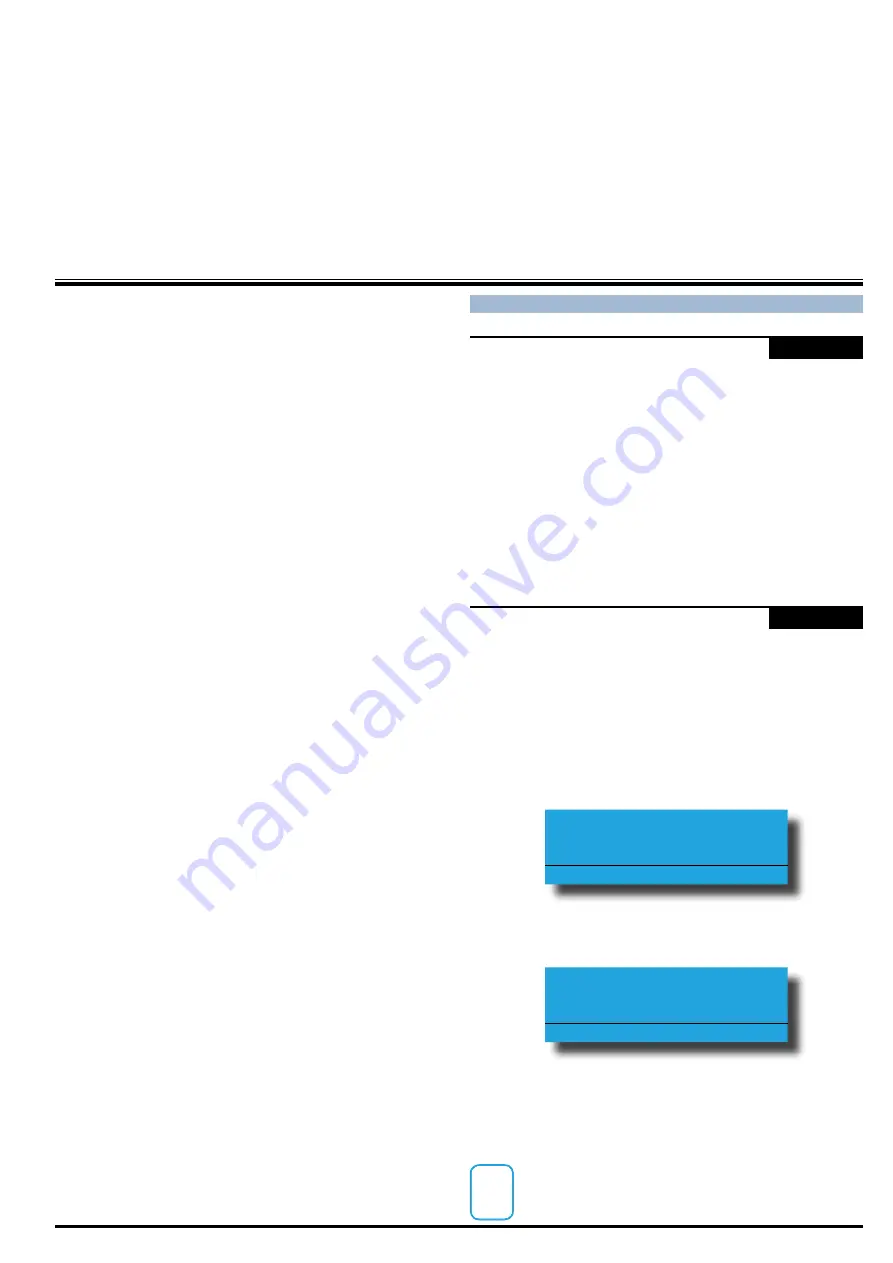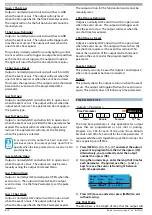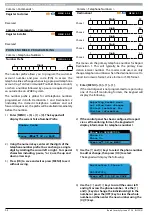
9-1
Bosch Security Systems 07/14 BLCC610I
SEC TION 9
Comms Programming
T
he control panel has a built in dialler that connects
directly to a standard PSTN telephone line. To program
the dialler you must set the telephone number to dial and
then the reporting format to send the information in.
The command menu allows you to set the Domestic
Numbers, initiate a Solution Link Upload / Download
session, turn on/off call forwarding.
There are two independent reporting routes that define
where a reportable event should be sent, by default all
events will report through route 1. Reportable events in
the system are categorised into Alarm, System, Emergency,
Open/Close and Test. This means that you are able to steer
these different event categories to different report routes.
A report route is just like an independent dialler, it has
its own primary and secondary telephone numbers and
reporting format.
Example: Route 1 = CID, Route 2 = SMS
If you set the reporting route for Open/Close as Route 2
and all other events to Route 1, then all reports will be sent
to route 1 in Contact ID format and then all open close
reports will be sent through SMS. This is very handy if you
want to monitor what time your children come home
from school or cleaners entering or leaving your premises.
Telephone numbers can be 32 digits long and characters
0-9 * # and , are supported with the comma representing a
2 second pause. Destination route 1 and route 2 both have
their own Primary and Secondary telephone numbers,
Domestic reporting has 3 telephone numbers and remote
access has one call back number.
There are two back to base monitoring formats called CID
and SIA, both formats are all predefined so the system will
always send the same reporting code for the same event.
The type of zone selected under zone type automatically
determines the reporting code to the base station. If a
zone is defined as Medical then when it goes into alarm
the report will be Medical Alarm, if a zone is programmed
as a Fire zone then the report will automatically be Fire
Alarm.
CO M M S P R O G R A M M I N G CO M M A N D S
Comms > Commands >
Call/Answer RAS
-
-
MENU 5-0-1
This command allows you to initiate a modem call
to an off-site computer for programming changes or
updates. The off-site computer must be connected to
the telephone line that is programmed in the call back
telephone number and be set to wait for an incoming call
from the same customer that initiates the modem call.
If the phone is ringing and this command is enetered,
then the panel will answer the call and attempt to start a
Solution Link RAS session.
Comms > Commands >
Call Forward On/Off
-
MENU 5-0-2
This command allows you to turn on and off the call
forward feature. When you turn on call forwarding, the
panel will automatically activate and de-activate the call
forward on and call forward off sequence accordingly
when you turn Area 1 All On and Off (arm and disarm).
1)
Enter [MENU] + [5] + [0] + [2]. If the call forward
status is OFF, the keypad will display:
Call Forward On/Off
Call Forward is OFF
To turn ON, Press ON.
To Go Back Press OK
If the call forward status is ON, the keypad will
display:
Call Forward On/Off
Call Forward is ON.
To Turn OFF, Press OFF.
To Go Back Press OK
2)
To toggle call forward on, press the [ON] key or
press the [OFF] key to turn call forward off.
3)
Press [OK] to save and exit, or press [MENU] to
cancel.
i
Note
See MENU 5-1-6 and MENU 5-1-7 to program the
Call Forward ON and Call Forward OFF number
sequence.
















































